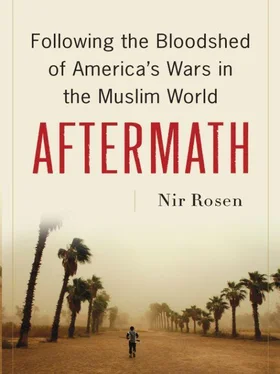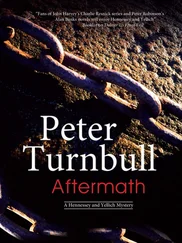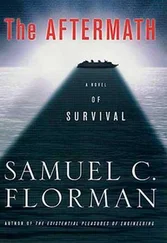McChrystal had a list of goals with vague suggestions about how they might be achieved. His job was to answer the question of how Afghanistan could control its own territory. But President Obama was busy asking an entirely different question, about whether the strategy itself was correct. He was asking whether the goal was valid. First they had to agree on what the problem was. Was it global terrorism, as Obama said, or was it a unified, peaceful Afghanistan? For the narrow goal of preventing Al Qaeda from having bases in Afghanistan, the United States has prescribed for itself the creation of a new Afghanistan and a never-ending counterinsurgency. So defeating Al Qaeda became building Afghanistan. McChrystal was concerned less with Al Qaeda, the original cause of the mission in Afghanistan, and more with the problem of the expanding Taliban. If Obama’s stated goal in Afghanistan was to disrupt, dismantle, and defeat Al Qaeda, then why was McChrystal determined to fight the Taliban? Perhaps he believed that if the Taliban took over, Al Qaeda might obtain bases in Afghanistan. But Al Qaeda was in Pakistan, it was on the Internet, it was in Europe (the 9/11 attacks were planned in Germany, after all).
There was an impossible disconnect between the assessment and McChrystal’s plan. McChrystal provided an accurate assessment of the dismal situation in Afghanistan. But the plan he proposed failed to address the key problems he noted. He explained that building Afghan civilian government capacity was critical, but he devoted a single page in Annex C to what he thought would fix the government.
The assessment noted that the Americans needed a much larger Afghan army and proposed doubling it. Yet it did not address how to do that, given that after eight years the Americans still had not provided sufficient trainers to get the army to the earlier goal of 134,000.
The assessment noted that the Afghan police were a major problem. Yet it suggested no new ideas for how to eliminate police corruption. It never even mentioned the justice system. The proposed solution was to double the size of the police force, but it did not explain how doubling the corrupt and dysfunctional force could help with COIN. “If I take drug dealers and gang bangers from the streets of DC to an eight-week program and then put them back in the same environment, can we expect it to change their activities?” one skeptical COIN expert working on Afghanistan asked me. “This corrupt force is the problem, so why put twice as many corrupt police out there?”
The underlying assumptions were not addressed in the assessment. The most important assumptions were those dealing with the political situations in Afghanistan, the United States, and allied nations. One key assumption was that it is possible to create a centralized, functioning state in Afghanistan. The Americans wanted to extend the reach of the government, but in the past extending the reach of an unpopular central government in Afghanistan caused instability. And after almost eight years in power, the Karzai government was only one of several competing powers within the country.
Another assumption was that the Karzai government would be perceived as sufficiently legitimate to gain the loyalty of the population. Before the election, Karzai’s legitimacy faced two major problems: many Afghans felt his government represented and was imposed by foreign interests, and it was permeated by widespread, systematic corruption that severely undercut the government’s legitimacy even in those areas it controlled. After the 2009 elections it was clear that Karzai could never gain legitimacy. Associating themselves with an illegitimate government only discredits the Americans.
A third assumption was that ISAF (meaning, primarily, the United States) would provide the resources necessary to conduct a population-centric COIN campaign. But even with the infusion of seventeen thousand U.S. troops, ISAF had too few troops to meet the training program goal for the Afghan security forces and vastly too few to secure the population. The “civilian surge” simply did not occur, and there was no indication that it would.
The assessment also assumed that the voters of ISAF nations, including the United States, would support this effort for the decade that historical examples suggest would be necessary for population-centric COIN to work. But Canada reaffirmed its intention to withdraw its 2,500 soldiers in 2011. The Dutch also stated they would withdraw. British public opinion was strongly against the war, and the validity and cost of the war was becoming an issue in the United States. To last for ten more years, the support would have to survive five more Congressional and two presidential elections.
A final assumption was that failure to create a unified, centralized state in Afghanistan would result in it the country’s reverting to a major base for Al Qaeda. But there was widespread disagreement about whether this would happen. Al Qaeda was already ensconced in Pakistan. Bases in Afghanistan could be bombed, and Afghans themselves might not be so welcoming to Al Qaeda.
If any of these five assumptions were not true or ceased to be true, then the Americans needed to rethink their strategy accordingly. This did not mean an immediate withdrawal, which could leave a vacuum that might make things even worse, but it required figuring out how to achieve the primary strategic ends in ways that could be supported by the means the Americans and their ISAF allies were willing to provide.
The underlying assumptions of the invasion of Iraq were that Iraqis would greet the Americans with flowers, that the Iraqi institutions would remain functioning with the leadership merely replaced, that the war would pay for itself, and that fewer troops would be needed to secure the country than were needed to invade it. All these assumptions proved wrong, and the result was a catastrophic setback for the United States—not to mention the further destruction of Iraq and the creation of Al Qaeda where it previously had not existed.
Assuming that Al Qaeda would set up bases in Afghanistan was like assuming Saddam would give his imaginary WMDs to Al Qaeda. It assumed that the Taliban were irrational and unaware of their interests. Their alliance with Al Qaeda was a result of common interests, but the Taliban were not interested in global jihad (though the longer the Americans are in Afghanistan, the stronger the alliance will become). Even Pashtuns who supported the Taliban were opposed to Al Qaeda attacks. And most Afghans disliked the Arab extremist volunteers.
For the first time in its history, the U.S. army had created a new category of warfare: “stability operations” were now given the same importance as offensive and defensive operations. Despite this the COIN community felt like insurgents in their own establishment, combating the forces of “Big Army.” Many of the COIN pioneers in Iraq were very influential in Washington. But opponents feared that this focus on irregular warfare and low-intensity warfare was weakening the U.S. military. To bolster their case, the COIN critics pointed to the Israeli military, which after years of being bogged down as an occupying army was defeated by Hizballah in 2006.
Some see Iraq as a victory that vindicated COIN and showed just how much the U.S. military can do, while others saw Iraq as a catastrophe demonstrating the limits of U.S. military power. If the U.S. military had learned lessons from classic imperialist counterinsurgencies such as the French campaign in Algeria, did that make the COIN doctrine any less imperialist? Of course, the most important questions were, Should the United States be involved in any of this? Should it act as an imperial power? Should the U.S. Army be doing stability operations in the first place? But these were questions for the politicians, not the military.
Читать дальше











